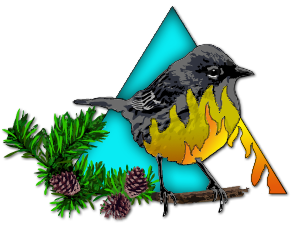Navigation

Upcoming Events
There are no events planned.
2018-2019 Webinar Series
Lake States Fire Science Webinar January 2019
THIS WEBINAR IS POSTPONED UNTIL FEBRUARY 2019, DATE AND TIME TBD
We will be hearing about the two funded intern projects from 2018
Thursday January 17, 2019 at 2 PM Eastern/ 1 PM Central
1. Seasonal Burning to Improve Management for Brushland-Dependent Species

Collaborating Partners:
Dr. Rebecca Montgomery, Associate Professor, Department of Forest Resources, University of Minnesota, 1530 Cleveland Ave North, St. Paul, MN 55108,Rebeccam@umn.edu
Dr. Lee Frelich, Director, The University of Minnesota Center for Forest Ecology
1530 Cleveland Avenue North, St. Paul, MN 55108,Freli001@umn.edu
Dr. Lindsey Shartell, Forest Habitat Research Scientist, Minnesota Department of Natural Resources
1201 East Highway 2, Grand Rapids, MN 55744, lindsey.shartell@state.mn.us
Dr. Charlotte Roy, Grouse Project Leader, Minnesota Department of Natural Resources
1201 East Highway 2, Grand Rapids, MN 55744, charlotte.roy@state.mn.us
Brushlands cover approximately 8.5 million acres in Minnesota and provide critical habitat for over 250 wildlife species, including >80 species on the MN DNR list of Species of Greatest Conservation Need (SGCN). Numerous game species also use brushland habitats including Sharp-tailed grouse, American Woodcock, white-tailed deer, and furbearers. Brushland habitats are a mosaic of shrubs and herbaceous vegetation, and require periodic disturbance to keep them from converting to wet forests or homogeneous areas of tall, dense shrubs. Prescribed burning has become an important wildlife management tool to incorporate fire disturbance in a controlled way on the modern landscape. Prior to European settlement, Minnesota’s brushlands were maintained by frequent wildfires. These burns occurred throughout the year, but were most frequent in the summer growing season and fall dormant season when vegetation was dry enough to carry fire. Currently, most brushland prescribed burns executed by the Minnesota Department of Natural Resources (MN DNR) are conducted in the spring. Because springs tend to be moist, fires are less hot and typically easy to control. However, cooler fires may be less effective in achieving habitat goals of maintaining open conditions by preventing the conversion of brushland to forest. Research in grassland and oak forests indicates that summer burns are more effective than dormant-season spring burns for those maintaining fire-dependent systems. Summer and fall fires could increase habitat value by creating patchiness in the vegetation due to variation in where the fire burned hotter and cooler. This patchiness would support greater plant and animal species diversity. In brushlands, very little is known about the effects of burning in different seasons on brushland vegetation and habitat.
2. Effects of fire restoration in pine woodlands on the culturally important species: lowbush and velvetleaf blueberry (Vaccinium angustifolium and V. myrtilloides)
Collaborating Partners:
TBD, Leech Lake Division of Resource Management
Brian Palik, PhD, Research Ecologist and Team Leader, USDA Forest Service, Northern Research Station, bpalik@fs.fed.us
Doug Kastendick, Northern Research Station
Todd Tisler, Chippewa National Forest
Blueberry plants (Vaccinium angustifolium and V. myrtilloides) are culturally important to the Ojibwe people of the Great Lakes region, who have gathered berries for sustenance and income for generations. Berry camps were especially important following widespread clearcutting and resulting slash fires around the turn of the last century (Norrgard, 2009). Since that time, succession and fire suppression in fire-dependent communities have inhibited blueberry plant growth and berry production. Thus lack of fire in fire-dependent ecosystems has important social impacts to Native American communities, in addition to effects on ecosystem function. Because of this, the Leech Lake Band of Ojibwe (LLBO) has expressed a desire to restore blueberry habitat across the landscape and assess management methods aimed at doing so. As part of addressing this broad objective, and to better meet their trust obligations to the LLBO, the USDA Forest Service Chippewa National Forest (CNF) actively works with the LLBO Division of Resource Management (DRM) to identify opportunities to use forest management, including prescribed fire, to restore and enhance blueberry production on the Leech Lake Reservation.
THIS WEBINAR IS POSTPONED UNTIL FEBRUARY 2019, DATE AND TIME TBD
CONNECT to WEBINAR
(No registration or passcode needed – please choose “Guest Login” and type in your First and Last name)
Or copy-and-paste into your browser: http://carmenconnect.osu.edu/presentingthe2018internprojects/
- To Test your computer internet connection and compatibility with adobe connect, click here and follow the prompts.
- You will need to use the speaker output from your computer, so make sure you know how to control your speaker volume and attach external speakers for better performance. We will prompt you to type questions in the chat box throughout the session.

.png)